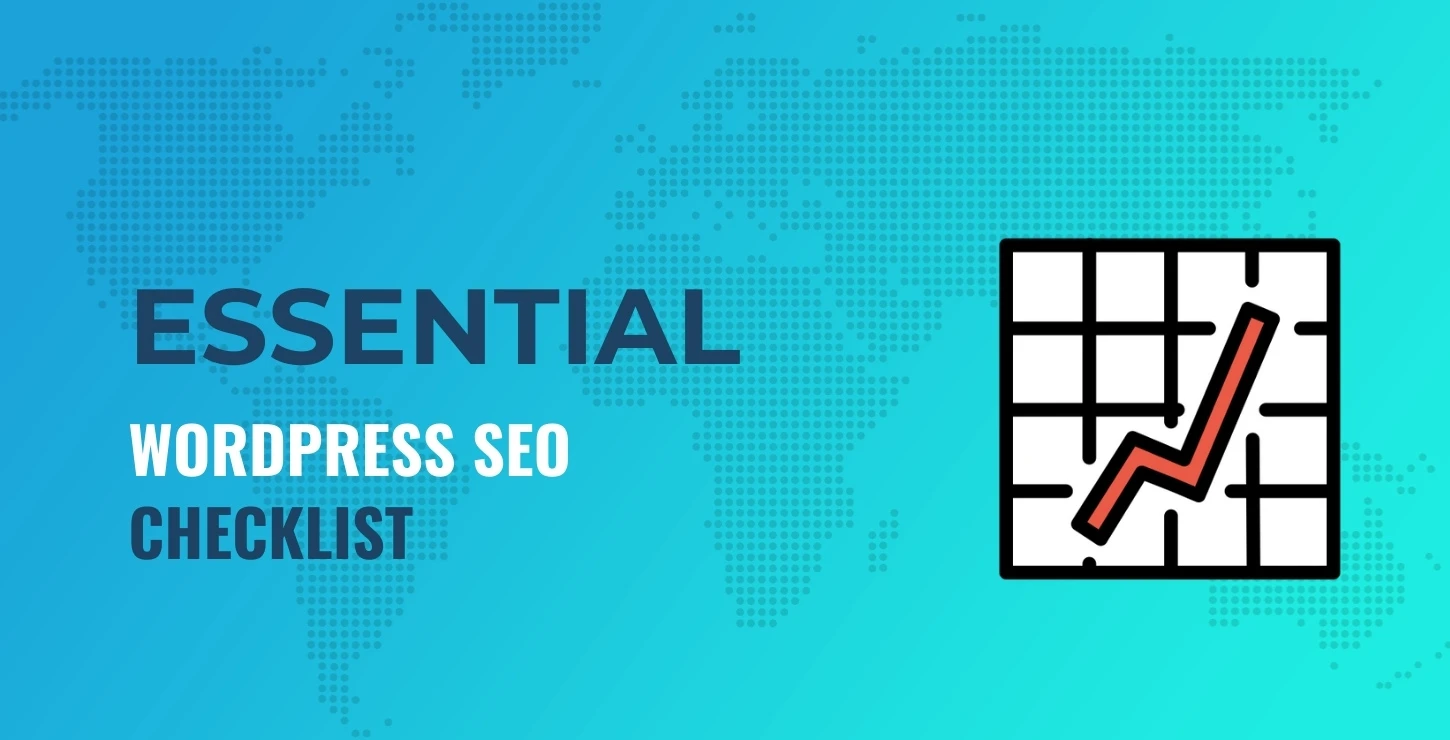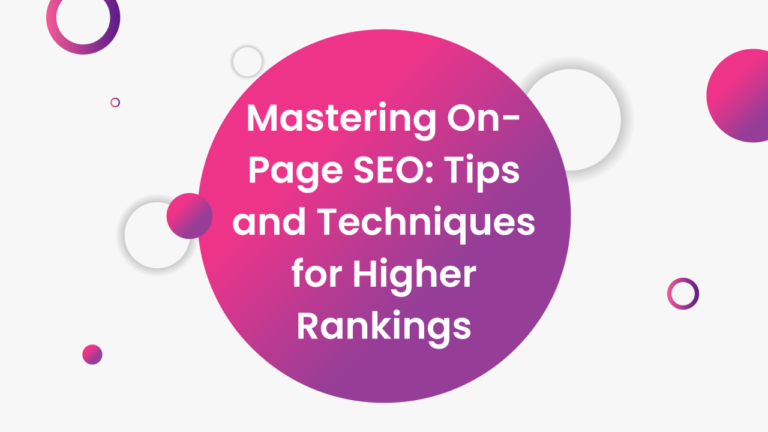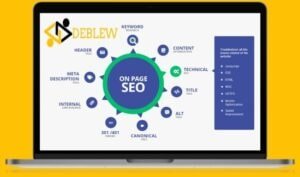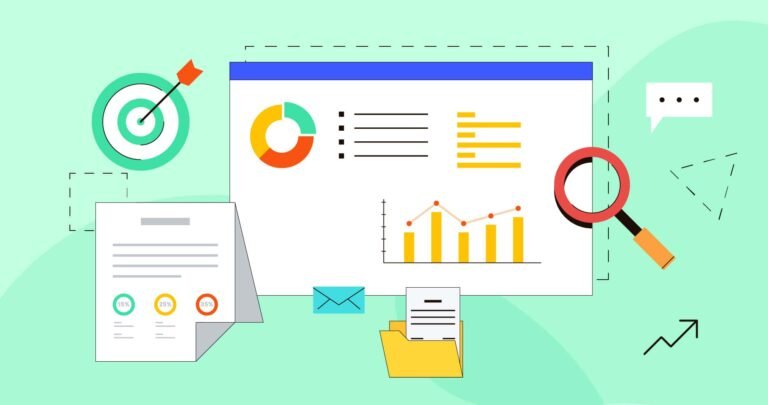On-Page SEO for WordPress To Boost Rankings Effectively
In today’s competitive online landscape, having a WordPress website is only the beginning. To ensure that your site gets noticed by both search engines and users, on-page SEO is essential. This article will guide you through the crucial steps to optimize your WordPress website for search engines and users alike.
What is On-Page SEO?
On-page SEO refers to the optimization of individual web pages to rank higher in search engines and drive relevant traffic. It involves adjusting content and HTML source code to make your pages more search engine-friendly. While off-page SEO focuses on backlinks and external factors, on-page SEO is all about what happens directly on your website.
Key Elements of On-Page SEO:
- Content Quality: Your content must be relevant, informative, and easy to read.
- Meta Tags: Title tags and meta descriptions should include target keywords.
- URL Structure: Clean, descriptive URLs are essential for both users and search engines.
Essential On-Page SEO Elements for WordPress
- Title Tags and Meta Descriptions
- Title tags are crucial because they are the first thing people see on search engine results pages (SERPs). Ensure each post/page has a unique, keyword-rich title.
- Meta descriptions summarize the content and should also include primary keywords. Aim for 150-160 characters to make sure the entire description is visible in search results.
- Heading Tags (H1, H2, H3, etc.)
- Use heading tags to structure your content logically. The H1 tag should contain the main keyword and be used once per page. Subheadings (H2, H3) should break down the content into sections and include variations of your keywords.
- URL Structure Optimization
- WordPress allows you to create SEO-friendly URLs through its permalink settings. Make sure the URLs are concise, descriptive, and contain your main keyword. For example, instead of a generic URL like www.example.com/p=123, opt for www.example.com/on-page-seo-wordpress.
- Internal Linking
- Linking to other relevant content within your site helps search engines crawl your site more effectively and enhances user experience. Ensure your anchor text is descriptive and relevant.
Using SEO Plugins for WordPress
SEO plugins are lifesavers for WordPress users, especially if you’re not a technical SEO expert.
- Yoast SEO: One of the most popular SEO plugins. It allows you to optimize your title tags, meta descriptions, content readability, and more. Yoast also provides a built-in analysis tool that offers suggestions for improving your on-page SEO.
- Rank Math: Another excellent SEO plugin with advanced features, such as keyword rank tracking and schema markup. Rank Math simplifies on-page SEO with helpful suggestions and a clean interface.
How to Use SEO Plugins:
- Enter target keywords for each page/post.
- Use the plugin’s analysis tools to improve SEO elements (e.g., readability, keyword density).
- Optimize meta titles and descriptions directly from the post editor.
Optimizing Content for Keywords
Keywords are the foundation of on-page SEO, but they must be used strategically.
- Keyword Research Basics: Use tools like Google Keyword Planner, SEMrush, or Ubersuggest to find relevant keywords for your niche. Look for keywords with high search volume but low competition.
- Proper Use of Keywords: Once you’ve identified your target keywords, use them naturally within your content. Keywords should appear in:
- The page title
- The first 100 words of the content
- At least one subheading
- The meta description
- The URL
Avoid Keyword Stuffing: Overloading your content with keywords can result in penalties from search engines. Focus on quality, not quantity.
Optimizing Images for SEO
Images are a vital part of your WordPress site, but they need to be optimized to improve loading times and SEO.
- Alt Text and File Names: Use descriptive file names (e.g., on-page-seo-guide.jpg instead of IMG12345.jpg) and ensure every image has alt text that describes the image while including your target keyword.
- Image Compression: Compress your images to reduce file sizes without sacrificing quality. Plugins like Smush or ShortPixel can help with automatic compression.
Mobile Optimization
With mobile traffic surpassing desktop traffic, having a mobile-optimized site is critical for SEO.
- Responsive Design: Ensure that your WordPress theme is responsive, meaning it automatically adjusts to different screen sizes.
- Mobile Friendliness: Use tools like Google’s Mobile-Friendly Test to check your site. If it’s not mobile-friendly, consider switching to a responsive theme or using plugins like WPtouch.
Improving Site Speed
Page speed directly affects both user experience and SEO rankings. A slow site can lead to high bounce rates and lower rankings.
- Caching Plugins: Plugins like WP Rocket or W3 Total Cache can speed up your WordPress site by caching static content, reducing load times for returning visitors.
- Minifying CSS, HTML, and JavaScript: Reducing the size of your site’s code helps it load faster. You can use plugins like Autoptimize to automate this process.
- Optimizing Hosting: Consider upgrading to a faster hosting provider, or use a Content Delivery Network (CDN) like Cloudflare to serve your site content more quickly to users across the globe.
User Experience and SEO
Google’s algorithms prioritize sites that offer a good user experience. To improve your site’s UX:
- Create Engaging, High-Quality Content: Focus on writing content that answers user queries, solves problems, and is easy to read. Break content into shorter paragraphs, use lists, and incorporate images or videos to make it more digestible.
- Page Layout and Design: A clean, user-friendly layout encourages visitors to stay longer. Choose themes that are both visually appealing and functional.
Schema Markup for WordPress
Schema markup helps search engines understand the content on your site better and can increase your visibility in search results with rich snippets.
- What is Schema Markup?: It’s a type of structured data that provides additional context to your content (e.g., product reviews, recipes).
- Adding Schema to WordPress: Plugins like Schema Pro or Rank Math allow you to easily add schema to your content without any coding knowledge.
Tracking and Measuring On-Page SEO Performance
Once you’ve optimized your site, it’s important to track its performance.
- Google Analytics: Use this tool to monitor your site’s traffic, bounce rate, and user behavior. Identify which pages are performing well and which need improvement.
- Google Search Console: This tool provides insights into how your site is performing in search results. You can track keyword rankings, see which queries lead users to your site, and identify potential issues like crawl errors.
Conclusion
On-page SEO is a critical component of a successful WordPress website. By optimizing key elements such as title tags, meta descriptions, and content, while also focusing on user experience and site speed, you can significantly improve your site’s search engine rankings. SEO is an ongoing process, so make sure to regularly review and update your on-page SEO strategy as search engine algorithms evolve.
Implement these strategies today, and watch your WordPress site climb the search engine rankings!







